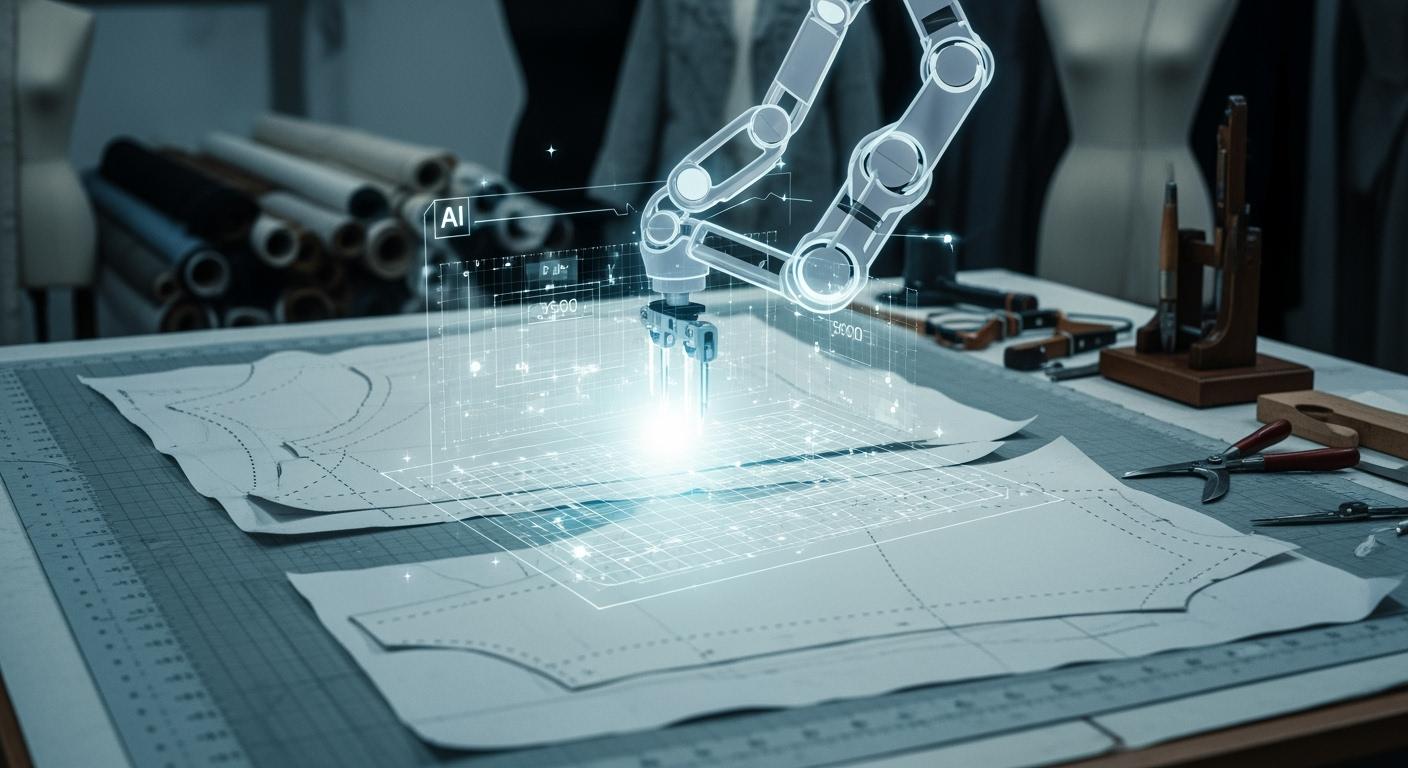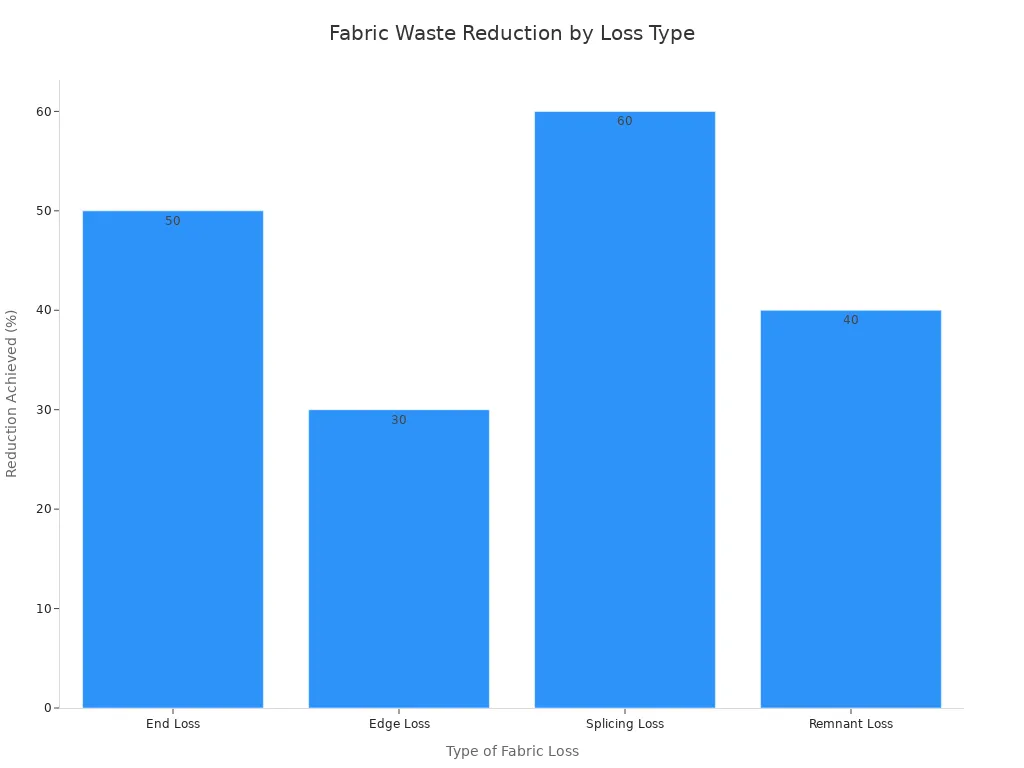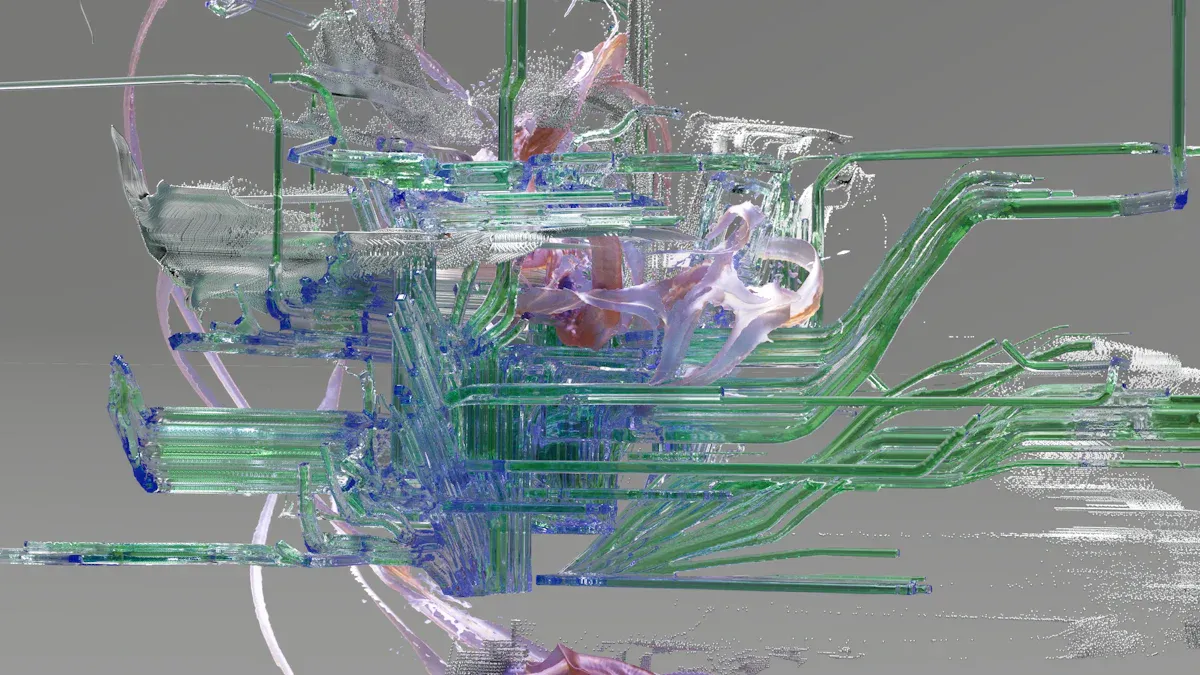
By 2025, ai-enhanced pattern grading is set to revolutionize fashion. New generative AI models enable automated pattern grading, creating a precise pattern for any garment. This transformation combines 3D body scanning and machine learning to address intricate fashion design challenges. The AI tools boost efficiency in pattern grading and make custom ai garment design accessible. This trend in ai pattern grading reflects a major market shift, promising better patterns for every garment.
Market Insight 📈 The AI in manufacturing market is projected to hit $8.57 billion by 2025. The AI in fashion market is set to reach $0.81 billion, showing strong industry investment in this technology. This growth supports the rapid adoption of AI for creating a superior garment.
Current AI Pattern Grading Trends

Current trends in ai pattern grading are reshaping the fashion industry from the ground up. These emerging trends focus on improving data accuracy, automating complex tasks, and making design tools more accessible. The evolution of ai pattern making is driving efficiency and creativity in ai garment design.
The Evolution of Body Data
Accurate pattern construction begins with precise body data. The industry is moving beyond simple 1D tape measurements and static 3D scans. The new standard is 4D scanning, which captures the body in motion. This dynamic data provides a complete understanding of how a garment will fit and move with a person, leading to a superior pattern. This is one of the most important trends for the future of fashion.
| Feature | 3D Scan | 4D Scan |
|---|---|---|
| Image Type | Static | Dynamic (Real-time) |
| Visualization Quality | High-quality detail | High-quality detail with movement |
| Primary Benefit for Movement | N/A (static) | Captures real-time motion, improving understanding of dynamic patterns |
| Use Cases for Movement | N/A | Fetal movements, heartbeats, joint movements in physical therapy |
AI-Enhanced Pattern Grading
AI-enhanced pattern grading automates the traditionally manual process of scaling a base pattern to different sizes. This technology uses algorithms to apply grade rules consistently, eliminating human error and bias. The result is faster and more reliable grading.
Case studies show AI grading engines reduce turnaround time by over 70%, freeing up designers to focus on creative tasks. This level of efficiency is transforming production timelines.
This ai pattern grading process ensures every garment maintains its intended fit and style across all sizes, a key challenge in mass production. The use of ai in garment construction is a major step forward.
Grading Complex Structures
AI excels at grading complex structures that are difficult to scale manually. Designs with asymmetrical cuts, intricate draping, or unconventional seam lines pose significant challenges for traditional grading. AI systems, like those developed by Tukatech, analyze the entire garment structure to apply grading rules intelligently. This capability ensures that the unique design integrity of a garment is preserved across the full-size range, making sophisticated fashion more scalable. The ai-enhanced pattern grading of these patterns is a game-changer.
Fabric Waste Optimization
Sustainability is a major driver in fashion, and ai pattern making contributes significantly by optimizing fabric use. AI-driven nesting software arranges pattern pieces on a fabric roll far more efficiently than a human can. This process minimizes the space between patterns, drastically reducing fabric waste.
 This optimization can lead to an overall fabric saving of 3-4%, a significant figure for both environmental impact and material costs.
This optimization can lead to an overall fabric saving of 3-4%, a significant figure for both environmental impact and material costs.
Accessibility for Non-Experts
New automated fashion design tools are making ai garment design accessible to everyone. Platforms like Canva AI and Artbreeder allow users without formal training to create ai-generated patterns from simple text prompts or images. This trend promotes inclusivity by lowering the barrier to entry for independent designers and small businesses. These tools empower a new generation of creators to bring their ideas to life, fostering innovation across the fashion landscape.
The 2025 Outlook: AI and the Future of Fashion

The future of fashion is rapidly approaching, with AI at its center. By 2025, the industry will see a major shift from simple automation to true creative partnership with artificial intelligence. Emerging trends in generative design, predictive analytics, and real-time manufacturing feedback are setting the stage. These advancements promise a new era of personalization, efficiency, and innovation in ai pattern making.
Generative AI Pattern Making
Generative AI is moving beyond editing existing designs to creating entirely new ones. This technology allows a computer to generate unique ai-generated patterns from scratch. It uses powerful tools like Generative Adversarial Networks (GANs) and Diffusion Models. These models learn from vast datasets of existing fashion designs to produce novel and viable patterns.
| Feature | Generative Adversarial Networks (GANs) | Diffusion Models |
|---|---|---|
| Architecture | A generator and a discriminator network compete against each other. | A forward process adds noise, and a reverse process reconstructs data. |
| Training | Can be unstable; the generator tries to fool the discriminator. | Generally more stable and less prone to errors. |
| Data Generation | Generates samples in a single step, making it fast. | Generates samples through an iterative process, which is slower. |
| Quality of Output | Produces high-quality images but may lack diversity. | Known for high-quality and diverse samples (e.g., DALL-E 2). |
This technology is already in use. Innovators are applying generative AI to create new concepts for fashion design.
- Fathy Rashad's ClothingGAN uses StyleGAN to create new garment designs.
- MIT Researchers developed systems that generate new fabric weave patterns.
- Stitch Fix employs generative models to design unique prints for its clothing.
- Adidas has experimented with ai-generated patterns for new shoe colorways and styles.
Predictive Grading and Fit
A major challenge in fashion is ensuring a garment will fit correctly. AI models can now predict a fabric's final drape and stress points before making a physical sample. This capability is transforming the grading and construction process. AI uses different methods to achieve this:
- Artificial Neural Networks (ANNs) enhance garment fit scores.
- Convolutional Neural Networks (CNNs) predict both drape and mechanical properties with high accuracy.
- Hybrid Models combine machine learning with physics-based simulations for even better results.
This predictive power directly impacts customer satisfaction and business costs. Brands using predictive fit technology see a significant drop in return rates because the custom fit is more accurate. Better fit leads to happier customers and less waste. The ai pattern grading process becomes more precise, ensuring the final garment matches the intended design and size.

When customers order the recommended size, return rates for women's fashion can drop by as much as 44%. This shows the power of AI in creating a better shopping experience and a more sustainable production cycle. The ai pattern making process benefits greatly from this data.
Real-time Feedback Loops
The connection between digital design and physical manufacturing is becoming seamless. Real-time feedback loops allow for instant adjustments during production. This creates a smart factory environment where the digital pattern and the physical garment are always in sync.
Technology Insight 💡 Key technologies enable this connection. Digital Twin technology creates a virtual copy of the manufacturing process. Physics-Informed AI integrates material science into neural networks. Sophisticated sensors for force, vision, and acoustics provide constant data streams. This information is processed instantly using IoT connectivity and edge computing.
This system allows AI to monitor the production line. If a sensor detects a slight change in fabric tension or machine performance, the AI can adjust the digital pattern or grading rules immediately. This level of ai in garment construction ensures quality and reduces errors without stopping production. The grading process becomes dynamic and responsive.
Integration with Virtual Try-On
The final piece of the puzzle is connecting ai-enhanced pattern grading with the customer experience. Virtual try-on (VTO) technology is merging with ai pattern making to offer unparalleled personalization. Companies like Couture.ai are pioneering this integration. They use generative AI to power virtual try-on applications.
This integration allows for truly personalized fashion experiences. A customer can use a VTO app to see how a garment looks on their digital avatar. The AI can then use that data to adjust the base pattern for a perfect custom fit. This creates a direct link between customer preference and the final construction of the garment. This trend toward personalization is a key driver in the evolution of ai garment design and ai pattern grading. Automated fashion design tools will empower customers to participate in the fashion creation process, leading to a future of personalised fashion.
Overcoming Key Challenges
The path to a fully AI-driven fashion industry has obstacles. Adopting these new technologies requires addressing gaps in data, skills, and system integration. The industry must also balance digital innovation with the need for physical validation. Overcoming these challenges is crucial for unlocking the full potential of ai.
The AI Data and Skill Gap
A significant challenge is the talent gap. The fashion industry needs professionals with a new blend of skills. These experts must understand both creative design and data science. Key competencies now include:
- Generative AI programs like Midjourney
- Computer-aided design (CAD) and 3D modeling software
- Predictive analytics and machine learning (ML)
- Data science and software development
Industry Note 📝 This skills gap highlights a major shift in the industry. Future trend forecasting will rely heavily on professionals who can interpret and utilize complex AI-generated data to guide fashion innovation.
CAD System Integration
Integrating AI tools with existing CAD systems presents technical hurdles. Historically, converting patterns between different software formats was a major barrier. Data quality is another concern. AI performance depends on clean, complete data, but design files are often imperfect.
Recent developments show progress. Industry leaders Lectra and Gerber now offer tools that enable quick and accurate pattern conversion between their systems. Future CAD APIs are expected to integrate more AI and machine learning capabilities. This will create smarter automation and analysis, making system integration smoother. These trends are vital for a connected workflow.
Physical Prototyping and Validation
Digital simulations are powerful, but they cannot completely replace physical prototypes. Physical samples remain essential for final validation. They allow designers to test aspects that digital tools cannot fully replicate.
- Tactile Feel: Prototypes confirm the fabric's weight, texture, and drape.
- Ergonomics: They reveal how a garment feels and moves on a real person.
- Durability: Physical testing validates material strength and construction quality.
This hybrid approach combines digital efficiency with real-world verification. It ensures the final product meets both design specifications and user expectations. This balance supports both innovation and sustainability by reducing flawed production runs.
The outlook for ai-enhanced pattern grading is strong, promising unprecedented efficiency for fashion. Generative models lead the charge toward an automated future of fashion. This progress in ai pattern making and ai pattern grading supports personalized ai garment design. Automated fashion design tools create better ai-generated patterns, improving the final garment construction.
The critical next steps involve standardizing data formats for ai in garment construction. Seamless system integration and validating digital patterns with physical prototypes are also key. This ensures the grading of each garment pattern is perfect. The ai pattern making process will refine the grading of all patterns, making ai pattern grading more precise. This perfects the pattern for each garment.
FAQ
What is AI-enhanced pattern grading?
AI-enhanced pattern grading automates the process of scaling a base pattern. It uses algorithms to create different sizes accurately. This technology ensures every garment maintains its intended fit, reduces manual errors, and speeds up production timelines.
How does AI reduce fabric waste?
AI software optimizes pattern layouts on fabric. This process, known as nesting, arranges pieces tightly together. It minimizes the space between patterns. This efficiency significantly cuts down on material waste and lowers production costs for manufacturers.
Will AI replace pattern makers?
AI will not replace pattern makers. Instead, it transforms their role into a creative and analytical one. The industry needs experts who can combine traditional design skills with data science knowledge to guide innovation and manage these powerful new tools.
What is the biggest challenge for AI in fashion?
The industry faces a significant skill gap. It needs professionals with both design and data science expertise. Integrating new AI tools with older CAD systems also presents a major technical hurdle for widespread adoption and a seamless workflow.
See Also
Forecasting Textile Machine Health: AI's Role in 2025 Maintenance
AI's Swift Response to Viral Trends in the Fast Fashion Industry
Sustainable Style: AI-Powered Fashion Innovations for a Greener World
Predicting Fashion Trends with Machine Learning to Significantly Boost Sales
AI-Driven Production Forecasting: 2024 Enterprise Best Practices for Accuracy